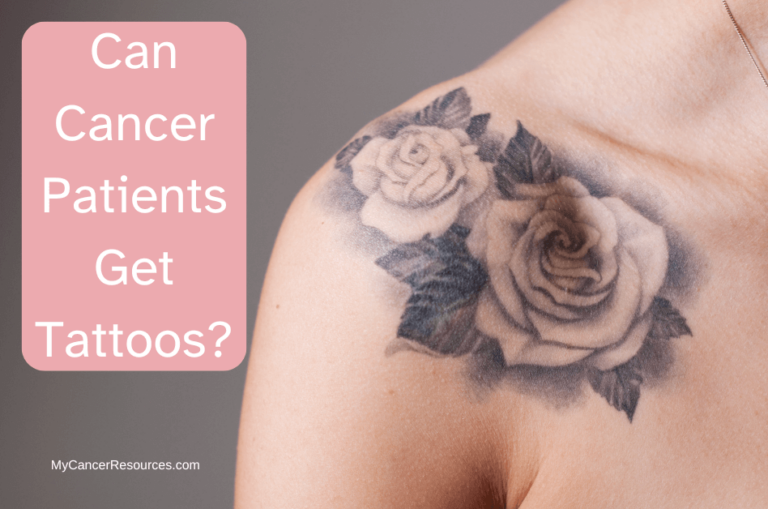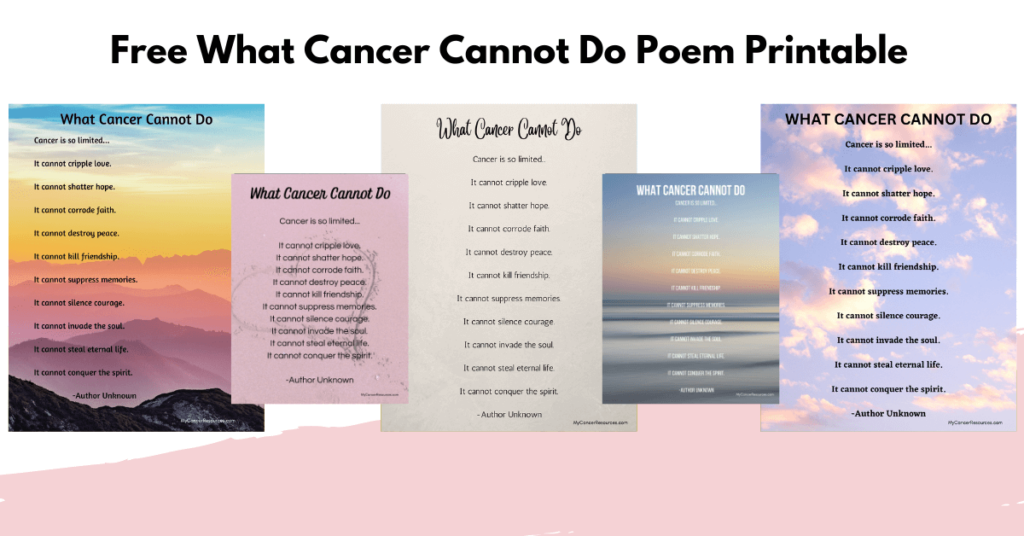
The journey through cancer, from diagnosis through treatment, often becomes part of a survivor’s identity. For many, getting a tattoo after battling cancer serves as a powerful form of self-expression and healing.
It’s like turning a page to a new chapter, marking milestones, or celebrating the strength it took to endure the grueling process that is cancer and its treatment.
For cancer survivors, tattoos can play a significant role in their emotional recovery. Most of my clients who have gotten tattoos have been breast cancer patients. After breast cancer treatment, some have opted for elaborate designs to cover mastectomy scars, and others, who have opted for breast reconstruction, choose to get nipple tattoos. There are some extremely talented artists who create very realistic cosmetic tattoos.
If you’re considering getting your first tattoo or adding to your collection of ink, you might be wondering: can cancer patients get tattoos? The answer is yes, it’s just a matter of when.
There are risks to be considered, and those who have had cancer treatments have a few more risks than those who haven’t had cancer. Read on to learn about when to get inked.
Understanding the Risks
Getting a tattoo involves a needle injecting tattoo ink into the top layer of skin. The tattoo gun moves in and out of your skin really quickly, depositing ink over and over, thousands of times per minute.
The needle prick can sting a bit, but the tattoo placement on your body and your pain tolerance has a lot to do with how painful you find the experience to be.
I personally have 4 tattoos, and thankfully my pain tolerance has increased as I’ve gotten older. In general, it’s the areas with thinner skin and right over bones that tend to be the most painful for people, including the feet, ankles, neck and ribs.
The process sounds pretty simple, right? But if you’ve been through cancer, it’s a bit more complex.
After treatments like radiation therapy or chemotherapy, your skin may be more sensitive and even thinner in the area where radiation beams were concentrated. You might have surgical scars that are still healing.
You may also have a weakened immune system, so it’s harder to fight off infections. Some people become more sensitive to and have allergic reactions to things that never caused a problem before.
This is where introducing new ink from a tattoo can cause unknown complications, including allergic reactions, scarring and skin infections that have an increased risk of developing into bigger health concerns.
This is why it is generally recommended to wait for at least a year after treatment ends and when scars have fully healed (which may take even longer than a year) before getting a tattoo. This gives your body plenty of time to heal and recover.
Another note of caution: the United States Food and Drug Administration does not regulate tattoo ink, since it’s considered a cosmetic product.
In testing, some tattoo inks have been found to contain heavy metals. Others may have azo dyes in them to produce different colors. These don’t typically cause problems when the molecule stays intact, but ultraviolet lights or some strains of bacteria can break the chemical down into a different compound that has been identified as a potential carcinogen (a substance that may increase the chances of developing cancer).
It’s not common, but sometimes tattoo pigments can migrate to the lymph nodes, staining the lymph node and making it more difficult to accurately examine with scans. This is important to note with survivors, as you’ll likely need to return for repeated scans in the months and years following treatment to make sure the cancer has not returned.
Some Other Points of Consideration
If you’re considering a tattoo, you may want to first talk to your healthcare team. They can guide you on the best timing post-treatment and alert you to any specific risks you might face based on the treatment you’ve had and the way your skin responded to that treatment.
Finding a skilled and licensed tattoo artist is non-negotiable. A reputable artist not only follows strict hygiene practices to ensure needles are sterilized and the tattoo chair or bed has been properly cleaned, but they also understand the nuances of tattooing over scar tissue or near sensitive areas, like where a chemo port might have been.
Take the time to do your research, not just on what design you want to get, but especially on the tattoo artist themselves. You want someone with experience tattooing cancer survivors, who will apply your body art with skill and compassion.
Lastly, timing is everything. Give your body the rest it deserves after a full course of radiotherapy or any other treatment. Your immune system will thank you for the patience, reducing the risk of infection and ensuring your tattoo heals properly.
Embracing New Beginnings with Ink
For cancer survivors, tattoos can play a significant role in their emotional recovery.
The good news is that there isn’t a reason why a survivor shouldn’t get a tattoo, it’s more about waiting for the right time. It’s a good idea to give your body time to heal and use that time to research designs and find a talented artist with the experience to tattoo over scars or sensitive areas post cancer treatment.
In the meantime, there are plenty of temporary tattoos that you can apply to see if you like the style. Temporary tattoos range from delicate, small tattoos to really detailed designs that cover a large portion of skin.
You can try them out to see which design expresses you best. There are even realistic nipple prosthetics that can be used for those who don’t want the needles.
Now that you know the answer to ‘Can cancer patients get tattoos?’, only you can decide whether nothing, temporary tattoos or a permanent tattoo is right for you.
Know that it can be done safely by an experienced tattoo artist and if you give yourself enough time to heal before getting inked, you’ll reduce the chances of having a negative reaction.



